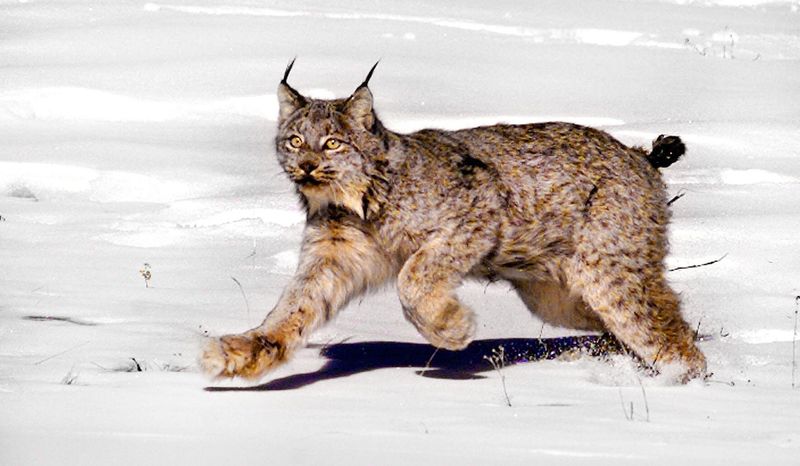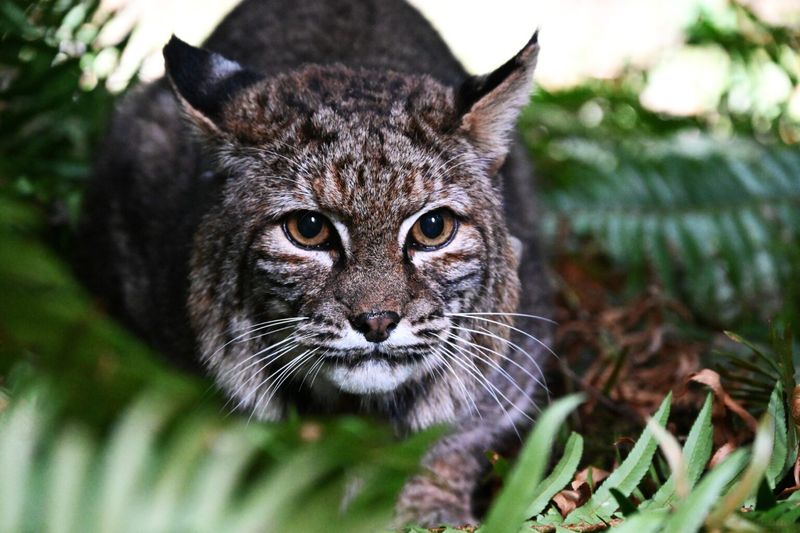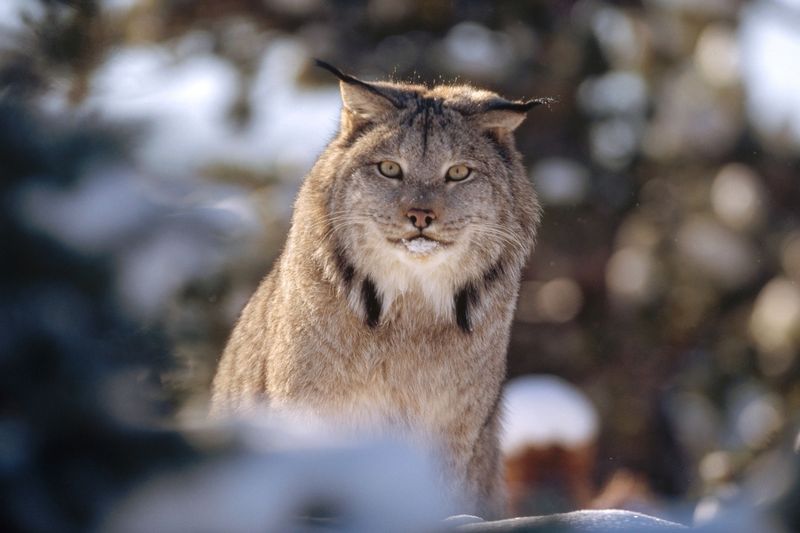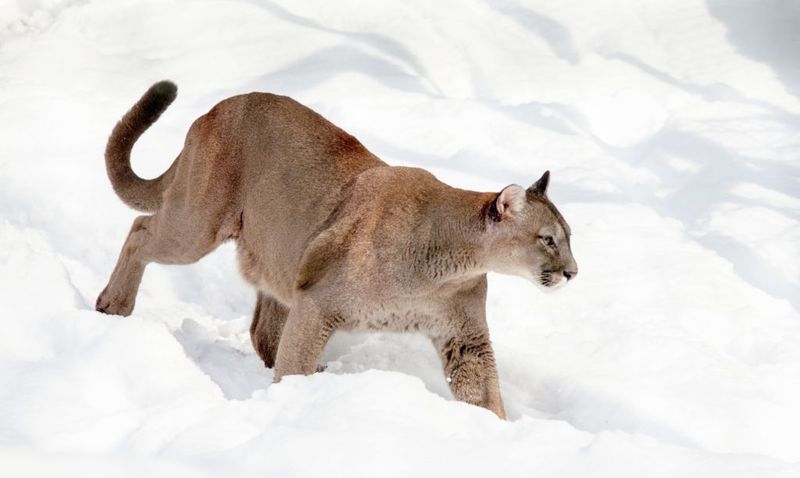📖 Table of Content:
The wild landscapes of North America are home to some of the continent’s most elusive and fascinating predators: the bobcat, cougar, and Canada lynx. Each of these wild cats boasts a unique set of adaptations and ecological roles, making them vital contributors to the ecosystems they inhabit. While it’s not uncommon to find one or two of these species in a given state, the presence of all three in the same geographical region is a rare and remarkable overlap.
These cats thrive in diverse habitats, from dense boreal forests to arid scrublands and alpine terrains. The bobcat, known for its versatility and adaptability, occupies a broader range than its feline counterparts. Cougars, with their stealth and power, demand vast, undisturbed territories, often in mountainous or rugged environments. Meanwhile, the Canada lynx prefers cold, high-altitude coniferous forests, where snowshoe hares—its primary prey—are plentiful. The overlap of their ranges speaks to states with exceptional ecological diversity.
This article highlights six U.S. states where these three species coexist. These places serve as vital refuges, offering the terrain, prey base, and climatic conditions necessary for all three to survive. From the Rockies to the Northeast, the following examples showcase the wild corners of America where nature’s quietest predators still roam.
1. Montana
Among the northernmost states in the contiguous U.S., Montana boasts a unique mix of ecosystems that cater to the survival needs of bobcats, cougars, and Canada lynx alike. Spanning from open plains to alpine forests, Montana offers the spatial diversity these species require. Bobcats are a frequent presence across much of the state, often spotted in forest edges and shrublands. In parallel, cougars make excellent use of Montana’s rugged terrain, with healthy populations in both the Rockies and lesser-known mountain ranges. The Canada lynx, more elusive and cold-adapted, finds sanctuary in the coniferous forests of northwestern Montana, particularly near Glacier National Park. Hunting regulations and conservation awareness further contribute to their continued existence. Montana stands out as one of the few states where you might encounter tracks from all three cats within a single mountain range.
2. Colorado
Elevated terrain defines much of Colorado, and this altitude diversity plays a critical role in supporting its feline trio. Throughout the foothills and canyon country, bobcats maintain a stronghold, thriving in areas with dense cover and abundant small prey. Cougars roam the mountainous heart of the state, from the Front Range to the San Juans, frequently using rocky outcrops and forests for hunting and shelter. The Canada lynx, after being nearly extirpated, was reintroduced in the late 1990s and has since established breeding populations in the alpine forests of southern Colorado. Protection of high-elevation spruce-fir forests has been instrumental in their comeback. Colorado’s proactive wildlife management policies allow it to balance human development with predator preservation. These three cats do not often cross paths but occupy neighboring ecological zones. Their quiet coexistence underlines the state’s natural complexity.
3. Washington
From sea-level rainforests to inland mountain ridges, Washington’s environmental contrasts provide a rare sanctuary for all three wild cats. In the western lowlands and eastern valleys, bobcats adapt well to fragmented habitats, including forest edges and farmlands. Cougars are widespread across the state and have even been observed closer to urban fringes as their range expands. Northeast Washington, with its colder and more forested regions, is particularly important for sustaining populations of the Canada lynx. Unlike their southern relatives, lynx here rely on deep snow cover to outcompete other predators. State and federal protection designations have shielded some of these critical lynx habitats from logging and motorized recreation. The mix of coastal ecosystems and high-elevation forests creates the overlapping zones these species need. As a result, Washington holds a special place in the conservation narrative of North America’s wild cats.
4. Maine
Nestled in the northeastern corner of the U.S., Maine is dominated by forest—a habitat preference shared by all three cats. Bobcats, especially in the southern and central portions, use the patchwork of woodlands and wetlands for hunting and denning. Cougars, officially considered extinct in the East, continue to generate reports from locals and naturalists, suggesting the possibility of a few transient individuals or a slow reestablishment. Canada lynx, by contrast, are well-documented in northern Maine, supported by deep snow, thick forest, and abundant snowshoe hare populations. Regulations preventing forest fragmentation have helped preserve their habitats in recent years. Maine’s harsh winters and dense undergrowth tend to deter widespread human intrusion, further benefiting these species. Although direct encounters are rare, all three wild cats find conditions here that echo their traditional habitats. This convergence in Maine adds a wild, untamed layer to New England’s ecological identity.
5. Wyoming
Elevated basins and forested slopes stretch across Wyoming, forming a rugged backdrop for its three feline residents. Bobcats can be found throughout much of the state, often in drier regions where cliffs and sagebrush offer cover. Mountain lions thrive in places like the Wind River Range and areas around Yellowstone, where mule deer—one of their main prey—are plentiful. The Canada lynx, although less common, occupies alpine forests on the state’s western edge, particularly near the borders of Idaho and Montana. Conservation corridors extending through Yellowstone and into the Rockies provide vital connectivity between lynx populations. Wyoming’s relatively low population density means that large swathes of territory remain wild and intact. This gives all three species room to maintain separate territories without excessive overlap. It is a state where predator-prey dynamics continue largely uninterrupted.
6. Idaho
Idaho’s jagged peaks and coniferous forests are ideal for elusive wild cats. The bobcat is widespread, using both lowlands and forested uplands to establish territory. Cougars are commonly sighted in areas surrounding national forests, where they silently stalk deer and elk. Canada lynx find suitable habitat in the colder, wetter parts of the northern panhandle and central mountains, particularly where spruce and fir dominate. Interconnected forest corridors allow these species to move between territories while avoiding human contact. Idaho has worked to preserve large tracts of wilderness, which serve as both hunting grounds and breeding territory. The presence of overlapping yet separate ecological zones supports the rare coexistence of all three cats. Wildlife enthusiasts and researchers alike find Idaho an invaluable region for studying wild carnivore interactions.





